Climate change: The Antarctic ice shelf in the line of fire
- Published
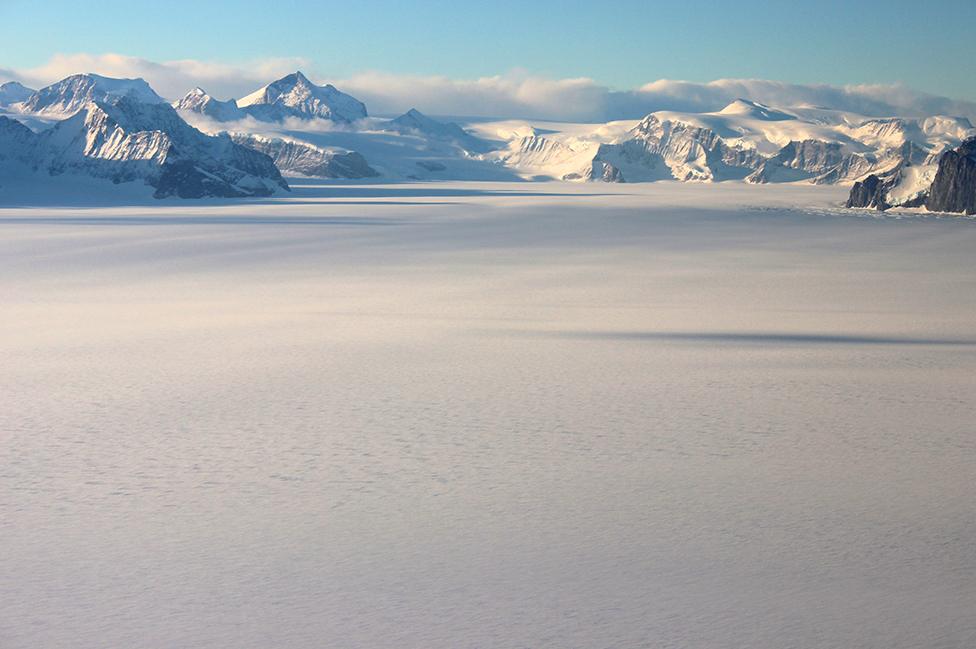
Larsen C: This vast platform of ice is built by glaciers flowing into the sea
Will it be next, and if so, when?
These are questions often asked about Larsen C, a huge ice shelf, twice the size of Wales, attached to the eastern edge of the Antarctic Peninsula.
A dozen or so smaller floating ice platforms, mostly to the north, have either disintegrated or substantially retreated in recent decades, as the region's climate has warmed.
So it's with interest that we learn from new research that Larsen C may be more resilient than we dared hope.
Scientists have been drilling through the ice shelf, and just in front, to get at sediments that record past ice behaviour.
And what these investigations tell us is that Larsen C has maintained integrity throughout the last 10,000 years. It's had a couple of phases of retreat in previous warm spells - roughly 9,000 and 4,000 years ago - but it's never collapsed like its northern cousins.
"It's clearly a robust ice shelf; it's hung in there for a long time," says study leader Dr James Smith from the British Antarctic Survey in Cambridge, UK.
"So with that resilience we could potentially prevent a collapse if we curb carbon emissions and get a good grip on atmospheric warming. But what I would say is that Larsen C is probably as vulnerable as it's ever been in terms of the last 10,000 years because it's likely at the thinnest it's ever been over that period," he told BBC News.
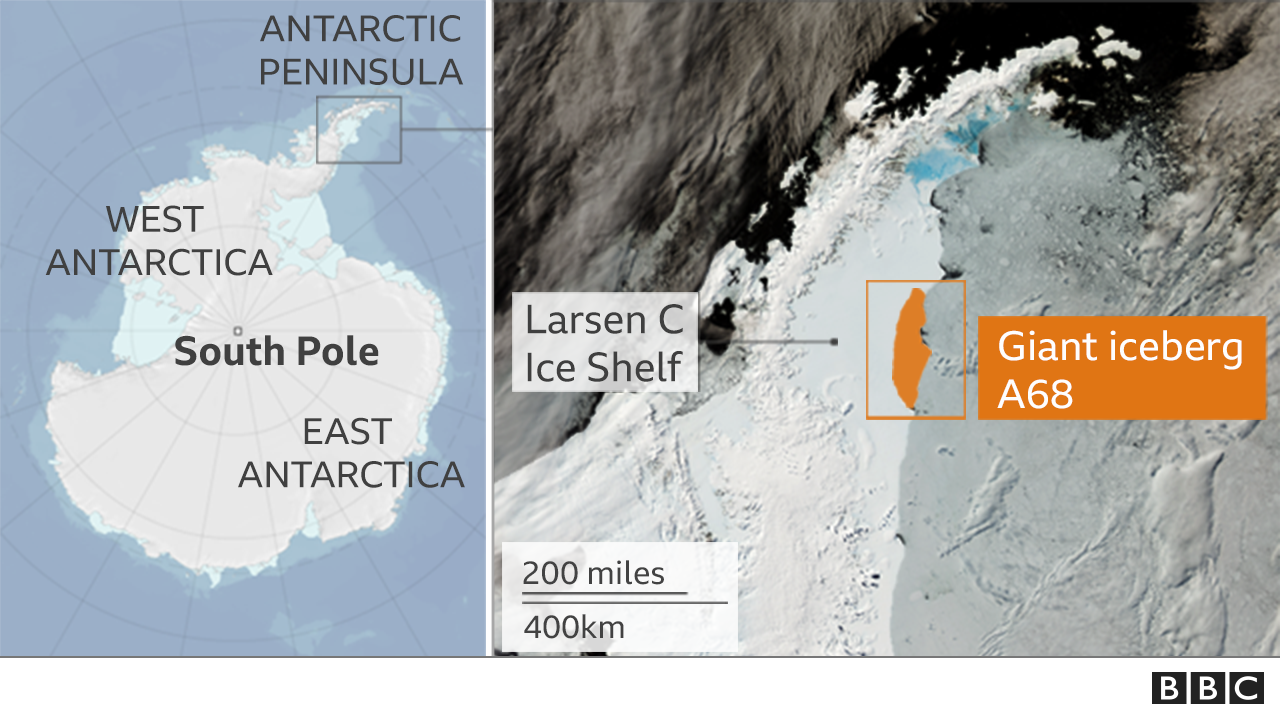
Larsen C is an amalgam of ice from many glaciers that flow off the Peninsula into the Weddell Sea. There's a point - it's called the grounding line - where this protruding mass becomes buoyant and lifts up to form a wide, 300m-thick, floating wedge.
Occasionally it will spit out icebergs, some on a gargantuan scale, such as the trillion-tonne A68 block that broke off in 2017 and later grabbed social media attention as it wandered up into the South Atlantic.
Larsen C's importance - and it's the same for all ice shelves - is that it buttresses the glaciers behind. Remove the shelf and ice streams to the rear flow faster, putting more mass into the ocean to further raise sea-levels.
This was documented in those northern collapses, the most spectacular of which was next-door Larsen B, which shattered in 2002. The feeding glaciers accelerated.
Larsen C bounds some 300-400km of coastline, so it's critical it stays intact for as long as possible as we further warm the planet in the decades ahead.
Watch: The RAF flies over iceberg A68a
Dr Smith and colleagues can be confident about what's happened in the past because of what they see in the layers of mud pulled up in the drill cores.
Sequences that hold compacted sediments speak to times when heavy, grounded ice must have been present. Sections where there was more organic material - the remains of marine organisms - record times when the ice retreated to some degree to allow seawater to circulate in the cavity under the floating front of the shelf.
"What was immediately obvious is that there was no evidence for major retreat or collapse," explains Dr Smith.
"[At ice shelves where there have been past collapses], you generally see a distinctive, open marine type of sediment that reflects open-ocean productivity. So this is phytoplankton and other marine microfossils. It's a big marine signal. But we didn't see that under Larsen C, so we're fairly certain there was no significant retreat or collapse."
Going back to those opening questions: How long can Larsen C resist today's climate change challenge? The pressures are rising. For example, there's evidence now that the ice platform is increasingly being confronted by warm winds that come down off the peninsula mountains and melt its surface.
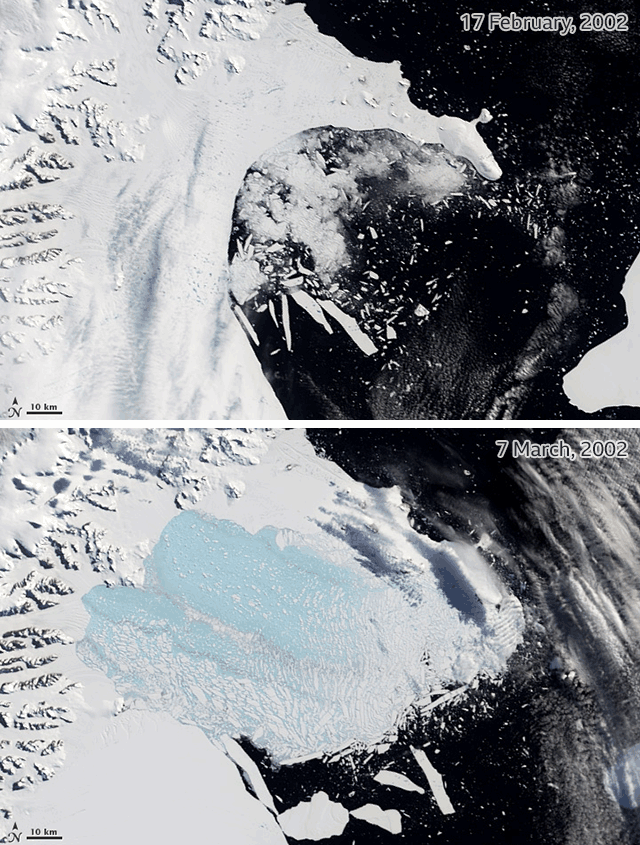
The Larsen B Ice Shelf, just to the north, shattered over the course of a few weeks in 2002
Prof Adrian Luckman will head down to Larsen C shortly to study its suture zones. These are the areas where the feeding glaciers are glued together to make the continuous shelf structure. The nature of the ice in these zones works to dampen the activity of cracks and so helps keep the shelf intact.
"Predicting the future evolution of Larsen C is tricky," the Swansea University researcher says.
"It sits in the cold Weddell Sea, so is not subject to the same rapid ocean warming seen elsewhere in Antarctica such as at Thwaites Glacier (in the west of the continent), and there is some evidence of ice shelf thickening rather than thinning.
"On the other hand, Larsen C has progressively lost area during the satellite era - quite spectacularly during the 1980s and in 2017 - so that trend is likely to continue."
The investigation of Larsen C's history is being published in the journal Geology, external.
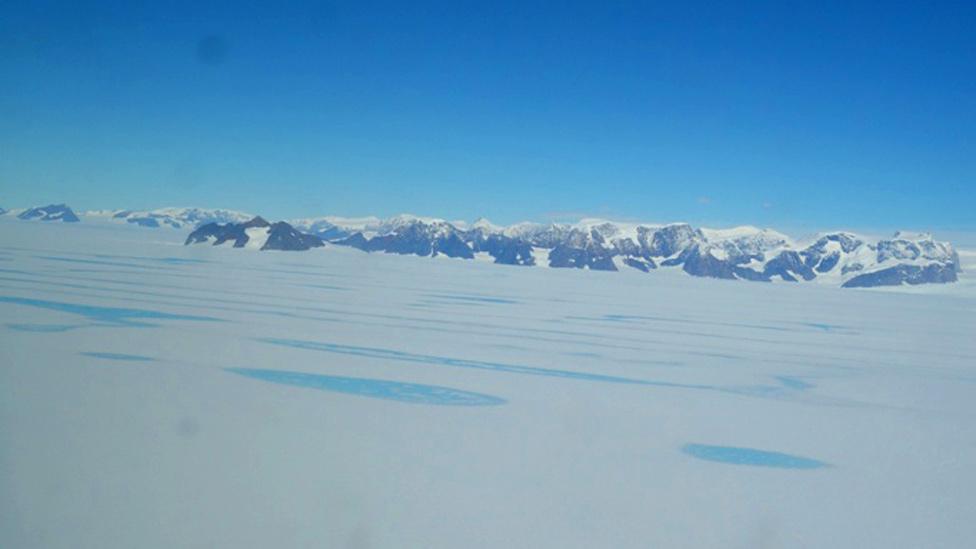
So-called foehn winds drop down from the mountains and melt the shelf's surface
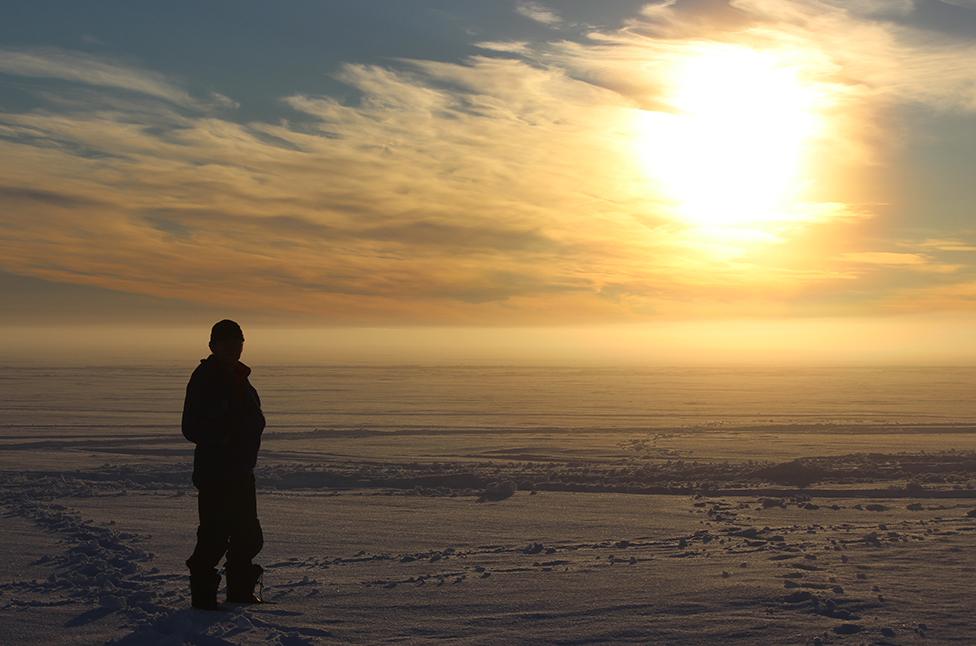
The focus of attention: Larsen C is the target of an intense research effort
